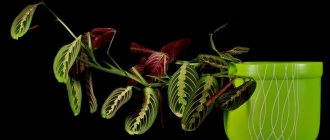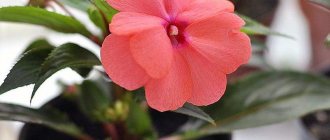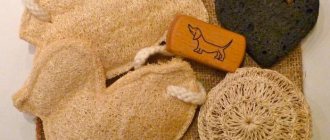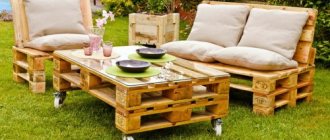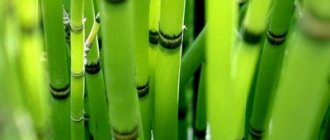- September 2, 2018
- garden plants
- Svetlana Funtova
Garden balsam is an unusually beautiful annual plant with a long flowering period. People call the flower “wet Vanka”, “light”, “touch-me-not”, “hurry”. Due to its raised flowers and relatively green mass, the plant is widely used in landscape design and to create flower beds, lawns, and alpine slides. In this article we will look at how to properly plant a flower in open ground, features of care and cultivation.
Description
The garden balsam flower (photos presented in the article) is a semi-shrub plant. Depending on the species, it can be annual or perennial. Strongly branched - its height, depending on the species, varies from 25 to 70 cm, in the wild - up to 2 meters. Stems are densely leafy, smooth. The leaves are 8-12 centimeters in length, alternately located on the branches of the plant, usually oval or oblong in shape with a pointed end or finely jagged edges, painted violet-bronze or green. During the growing season, small drops appear on the leaves, which gave the balsam its popular name “wet Vanka”.
In countries with year-round cultivation, the plant can bloom for up to 11 months, which is undoubtedly one of its main advantages. Depending on the variety, up to 50 flowers can bloom simultaneously on one balsam bush.
Reproduction
The garden balsam flower is propagated by cuttings or by seed:
- The first method is suitable for growing at home or in open ground. Select the strongest shoot and cut it at an angle of 45°. The cut is treated with growth stimulants and placed in a vessel with water or pre-moistened soil. When the cutting takes root, it is transplanted into a small pot, the diameter of which is 10-12 cm. If you plant a spring cutting in the ground, the balsam will delight you with its flowering already in the same summer. A summer cutting that is planted will bloom in the fall and continue to bloom in the winter in the presence of warmth and light. An autumn seedling needs additional care, otherwise there is a risk of rotting of the root system.
- Seeds begin to be sown in early March; with the appearance of two balsam leaves, they are planted in different pots. Towards the end of May, plants can be planted in open ground.
The most popular types and varieties
Waller
This is a bush up to 50 cm high. It has erect, succulent stems, delicate wide green or brownish oval-shaped leaves. This Balsam loves warmth and light, and this circumstance must be taken into account when choosing its place of residence. Flowers can be one-color or two-color, flowering is abundant. Waller's balsam became the progenitor of numerous hybrid varieties.
New Guinea
New Guinea balsam is a hybrid perennial plant that has large flowers of bright colors. Can be grown both in open ground and in a pot on a windowsill. Not afraid of direct sunlight. It is resistant to insect pests and diseases. The beautiful leaves have a rich green color with yellow veins. Blooms profusely in a warm sunny location.
This may be interesting: Crossandra - care and reproduction at home
Kandy
This is a young, recently bred variety. The bush has smooth, succulent stems up to half a meter long, from which petioles extend with oblong leaves with a pointed tip. The color of the leaves has various shades of green. Flowering is abundant, buds on high stalks have different colors. The flowers are soft and velvety to the touch. The variety is decorative and does not require care.
Strawberries and cream
This is a spectacular terry variety of Balsam with red and white flowers up to 4 cm in diameter. The plant is compact in shape with well-branched stems. Blooms for a long time even in light shade.
Peters
This species is distinguished by the color of the foliage - it has a bronze tint. Blooms profusely with bright red flowers.
Orchidaceous
This species has a succulent, brittle stem that is dark pink in color. The dark green leaves, velvety to the touch, have dark pink or red veins that run along the entire length of the leaves. The flowers are shaped like shoes. The petals are painted white, sometimes with yellow-orange or burgundy splashes. This Balsam is not affected by spider mites.
Tom Thumb
A beautiful and abundantly flowering bush of compact size with branched stems and bright, double large flowers. It can be grown as an indoor flower or in open ground. This variety loves sunny places, but is able to grow and bloom in partial shade and even in the shade, where its branches and flowers will be smaller. The flower should be watered abundantly, as it does not tolerate drying out of the soil. To make the bush more branchy, its tops need to be pinched. Indoor Balsam can grow in a cramped pot. In open ground, the size of the flower will undoubtedly be large.
Cutie
This is a beautiful, compact bush with dense foliage. It blooms wonderfully with pink or white flowers at home - all year round, and in the garden - all summer. Its height does not exceed 20 cm. Loves warmth. Grows in both sun and light partial shade.
Salmon Chiffon
This bush is notable for its long and abundant flowering with incredibly large double flowers of bright color. The petals resemble delicate chiffon fabric in a bright salmon color.
There are also a huge number of other varieties, but they are more capricious, require more painstaking care, and therefore are less common in the collections of beginning gardeners. In this article we will introduce you to the rules for caring for Impatiens, which will be suitable for the laziest or busiest gardener.
Growing conditions: soil, temperature, lighting
Impatiens cultivation and care largely depend on temperature conditions, area illumination and soil quality.
- For a plant to grow and develop well, it needs sufficient humidity and good lighting. Impatiens belong to light-loving flowers, but still the best growth and flowering indicators are shown by representatives grown in partial shade lighting. It has a bad effect on the plant, and sometimes leads to death when grown in the shade.
- The soil around the balsam needs to be loosened from time to time, but not too deep. In the off-season (once every 14 days), the flower needs to be fed. During the winter flowering period, feeding the plant is also necessary, but this can be done once a month.
- The optimal temperature for growing balsam in summer and spring is from 22 to 25 ° C, subject to regular watering of the substrate and ventilation of the room.
Planting balsam in the garden
It is possible to plant a delicate flower directly into the ground only when the air temperature reaches the summer norm. It is planted later in the northern regions, and earlier in the southern regions. If the threat of frost remains, the plant must be covered, because the slightest hypothermia will kill the balsam.
There are three ways to grow new specimens:
- Seeds.
- Seedlings.
- By cuttings.
The first method is preferable for southern regions, where spring and summer begin early and autumn is warm. In the middle zone, if the weather forecast is favorable, you can also sow seeds in a flowerbed right away, but the weather in this region is often changeable, so it is better to play it safe and use the seedling method - placing half-mature, strong plants in the ground. For the northern regions, only the greenhouse method is possible - when the seedlings are kept in a greenhouse for some time before moving them to the open air.
The process of propagation by cuttings
Use of seeds
It is advisable to propagate balsam using the original seed material only if the soil in the garden has had time to warm up well and the air temperature has risen to at least +20 degrees. Such weather in the middle zone usually occurs in late May-early June, but this is not a problem - garden varieties grow quickly and will then bloom until late autumn. But still, this method works better in the southern regions, where there is no threat of a sudden drop in temperature to frost.
Balsam seeds
You can buy seeds in the store. Impatiens have excellent germination rates, so the seed has a shelf life of 6-7 years. But in order for the seeds to germinate, they need to be properly processed:
- We disinfect the seed in a weak solution of potassium permanganate for about a quarter of an hour).
- Place the wet mass on a wet napkin placed on a shallow plate.
- Place in a warm place and wait for it to swell (about 6-12 hours).
- In beds with pre-prepared soil, we make holes 1-2 centimeters deep.
- Place the seeds in moistened soil, cover the top with dry soil, sprinkle it and add mulch.
- Cover the bed with film.
- We wait for the entrances to appear on the 10th day, after which we remove the cover.
- If the crops are too dense, thin them out so that there is about 30 centimeters between plants.
In a similar way, you can plant balsam earlier - in April, using a greenhouse or greenhouse.
Obtaining seedlings
A less risky method of propagation is to obtain seedlings from seeds and place them in garden beds. To make it before the warm season, you need to start at the end of February or early March. Individual pots with substrate or peat tablets should be selected for new seedlings.
The swollen seeds prepared in the manner described above are transferred to moistened soil, and the containers are wrapped in film. Periodically, its edges are raised and a little water is added so that the soil does not dry out.
Balsam seedlings
After the sprouts appear, the cover is removed and the pots are placed in the sun, for example, on a southern windowsill. Additionally, you can highlight the balsam with phyto or a regular lamp. During this period, the plant requires an air temperature of 23-25 degrees.
When the plants have formed 3-4 fairly large leaves, the crown is pinched so that the branching of the crown begins. This will make the bush more luxuriant. Specimens with a formed and strong stem can be planted in the ground, but you need to wait for the onset of warm weather. If you plant at the end of May, flowering will begin in June.
Picked seedlings
How to use cuttings for propagation
If you want to grow balsam in your garden as quickly as possible, then in this case the cutting method is best suited. Sprouts can be obtained from mature plants that are already on the site, from universal varieties from the windowsill, from friends and neighbors. Thanks to this method, the flower takes root well and reaches the flowering stage very quickly.
Step-by-step instructions for cutting balsam
Step one: carefully cut the cutting with internodes from an adult bush (It should be at least 7-8 centimeters long).
Step two: place the shoot in a jar with pre-settled clean water and wait until the roots appear.
Step three: transplant the cutting into a pot with loose and moistened substrate.
Step four: Move the container to a well-lit windowsill.
Step five: cover the shoot with film or a bag, and periodically water it a little so that the soil does not dry out.
Step six: after 7-10 days, when the plant is well rooted, you can plant it in a flowerbed.
Planting methods
On the territory of Russia, planting and caring for garden balsam is carried out only with the onset of a warm period. The plant is planted in open ground no earlier than the air temperature rises to 20 °C.
There are 2 planting methods:
- planting seedlings;
- sowing method.
The shelf life of garden balsam seeds is approximately 8 years; by purchasing them once, you can provide yourself with seedlings for several years. Better germination can be achieved after 3-4 years of storage.
Planting seeds in open ground
The method is only suitable for warm regions. Care is the same as for balsam grown from seedlings
Rules and terms
The permissible temperature at night is at least +19°C, during the day – from +20 to +23 degrees. Frosts and sudden fluctuations in indicators can lead to the death of flowers. If the night temperature is likely to drop, plants are covered with acrylic or spandbond to create a greenhouse effect. The time for planting seeds directly in open ground: late May - early June.
Selecting a location
Sufficient amount of light with the possibility of shading in the heat. The leaves of the balsam are tender and cannot stand the scorching sun: the flower is popularly called the Touch-me-not. Elevated areas and windy areas are also not suitable. You should not plant a flower garden in the shade of trees with a dense, voluminous crown.
Soil
Nutritious, light, loose soil, with a sufficient amount of nutrients, good aeration. Be sure to add peat and turf.
The acidity is weak, the soil is not over-watered. Succinic acid normalizes the microbiological composition of the soil for indoor and garden plants.
Landing Features
It is important to maintain the distance between the holes and leave enough space for future plants, taking into account the variety. The seeds are not deeply buried, otherwise shoots will not appear.
It is useful to first soak the seeds in a weak solution of potassium permanganate, then in a growth stimulator: this way the greens will appear faster. Young plants are watered three times a week; if it is hot outside, then moisture is added by sprinkling in the evening and in the morning.
How to prepare seeds for planting?
Garden balsam seeds (photos of which are presented in the article) require careful care and proper preparation.
First of all, the seeds must be disinfected in a bright solution of potassium manganese or other liquid with disinfectant properties available on hand. The seeds are soaked in the solution for 15 minutes, then placed on a damp cloth to swell.
Several seeds are dropped into prepared, moistened holes and sprinkled with soil. The top of the soil is lightly sprayed and covered with cellophane. Under no circumstances should the soil be allowed to dry out or the temperature drop below 20 °C. After 1-1.5 weeks, when shoots appear, the film can be removed. In case of dense sowing, seedlings are pruned or thinned.
How to grow from seeds
To obtain sprouts by sowing seeds, you must:
- collect flower soil in a plastic container, mixing it with vermiculite or sand;
- compact a little and spray the contents from a spray bottle;
- distribute small seeds evenly over the damp surface;
- and just lightly sprinkle with soil.
To wait for the sprouts to germinate, the container must be placed in a plastic bag to create a small greenhouse. Place in a warm, bright place, out of direct sunlight. Germination occurs at 21 C after 15 days.
Advice. Ventilate the crops daily and keep the earthen ball moist.
After germination, the shelter can be removed. When two true leaves appear, the seedlings are plucked - carefully transplanted into small 50-60 ml cups filled with soil substrate.
Growing from seeds allows you to have the largest amount of planting material.
Preparing the soil and container
When growing garden balsam at home, the plant should be provided with loose soil. Excessively enriched soil composition contributes to the rapid development of green mass to the detriment of flowering.
The most optimal soil for a flower is an even ratio of turf, compost and humus, or peat and sand in equal proportions and their double portion of leaf soil. Seedlings do not tolerate organic fertilizers.
It is best to grow balsam in separate containers or medium-sized pots with drainage holes. It’s good if the size of the container is only a few centimeters larger than the sprout.
Planting and care
Propagation and care are not difficult, so even novice gardeners can handle them.
In the garden, planting seedlings begins in the spring at the end of May, beginning of June, when the danger of frost has passed, at a distance of 35 cm from each other.
You can add a handful of peat and the same amount of sand to the prepared hole. Sprinkle with a solution of any remedy for diseases, according to the instructions.
Place the sprout in the designated area and sprinkle. Further care consists of keeping the soil moist - periodic watering, loosening and removing weeds.
Fertilize every 14 days with humic or other complex fertilizers throughout the entire growth period.
It is important to limit the use of nitrogen, this helps to increase the growth of green mass and reduce flowering.
To increase flower stalks, it is recommended to pinch the apical and lateral branches.
Sowing
Planting garden balsam in a container is carried out in several stages:
- The soil in the prepared container is thoroughly loosened and leveled, then the surface is moistened with settled water at room temperature. Seeds are placed on top.
- If sowing is done in separate pots, then no more than three seeds are placed in each. When planting in a large container, the seeds are laid out according to the principle of a square - 4 by 4 cm.
- For better germination, seeds require good lighting, so they are left on the surface of the ground or lightly dusted with sand.
- After this, the soil is moistened again and covered with a transparent film or other transparent cover.
- Containers with seeds are placed in a well-lit and warm place. Direct rays of the sun can be destructive to seeds, so it is better if the light is diffused.
- Every day the soil must be moistened and the room ventilated for 3-5 minutes.
- The air temperature should not be lower than 20 °C.
If the outcome is successful, the first shoots will appear in 7-10 days.
Growing garden balsam from seeds at home
Seedlings will allow you to achieve early flowering of balsam in flower beds. You can sow seeds in various containers - plastic cups, container-type seedling boxes, pots with a diameter of 7 cm. The main thing is that they have drainage holes.
Preparing seeds for sowing
The seed must undergo standard processing:
- soak for 20 minutes in a light manganese solution;
- soak for several hours in warm water, to which a growth stimulator is added;
- then the seeds are washed under running water, laid out on a napkin and dried.
After which the material is ready for laying in the ground.
Selection of soil mixture
Balsam is picky about the substrate. The soil should have a moderately loose structure, weak acidity and contain a nutrient composition. You can buy ready-made soil at a flower shop or make your own mixture using equal amounts of turf soil, sand, peat, and perlite. After thoroughly mixing the components, the substrate is treated with any fungicide against fungal diseases.
Sowing balsam seedlings with seeds
A drainage layer is placed in the container and the container is filled with soil mixture. The soil is moistened and seeds are placed on the surface. If you take small containers, then put 1 seed each. In trays and seedling boxes, they adhere to the scheme - make intervals of 3 cm.
After sprinkling the seeds with a thick layer of soil, moisten it with a spray bottle (so as not to wash out the balsam). Cover the container with glass or film and place it on the windowsill, closer to sunlight. But at the same time, they try to scatter ultraviolet rays using curtains (blinds).
Caring for seedlings and when to plant them in the ground?
As the seedlings develop, the care of garden balsam changes, but this is done in stages. First, the duration of ventilation is increased, then small holes are made in the covering film and only then it is completely removed.
Now you can start hardening the seedlings. Every day the air temperature is reduced by one degree to 16 °C, while watering and lighting are not changed. Thinning or picking is carried out after the appearance of two full leaves. After this, the frequency of watering can be reduced.
4-5 weeks after planting the balsam, the seedlings are accustomed to the open air. For the first two days, the sprouts are left outside for a couple of hours, extending the residence time every day. As a result, after a week the seedlings remain in the air all day.
Young plants have not yet become strong, so pots with sprouts are protected from exposure to sun and wind. Watering is carried out in the evening, when the seedlings are brought home. The water should be at room temperature or a few degrees warmer.
As a rule, plants are transplanted into open ground in the last ten days of May, when warm weather sets in. The sprouts are transplanted with their own lump of earth at a distance of 25 to 50 cm, depending on the type of balsam.
Impatiens species
Vanka wet has several varieties. The most common ones are listed below.
Balfour's balsam - Impatiens balfourii
In the Spanish Pyrenees, this plant is planted in a wide variety of containers: old olive oil barrels, buckets, baskets, cans.
Balfour's Balsam
The unpretentious impatiens thrives in these improvised containers; it blooms and bears fruit profusely, scattering seeds everywhere. Under such cultivation conditions, its bushes reach a height of approximately 1 m. Small flowers, painted in bright colors, develop on them. They attract swarms of insects, although only the smallest of them can feast on the sweet nectar.
Impatiens Balfour came to European gardens from the warm regions of the Himalayas, so it loves warmth and abundant watering. Its seeds easily germinate between the slabs that pave the paths, and the plants developing from seedlings feel good in such “rocky” terrain.
The seeds of this plant can be purchased only from time to time; for some reason they are almost never available for free sale. They are sown in March-April indoors in pots with a light sandy earth mixture, as well as outdoors in loose, moist soil. For unknown reasons, seeds germinate unevenly, and sometimes do not germinate at all. If you are lucky enough that the impatiens have grown and bloomed, watch its fruits. When ripe, they burst, as if exploding, and the seeds scatter in different directions from the mother plant. They often germinate the next year, and new bushes may appear in the most unexpected places.
Iron balsam - I. glandulifera Royle
Homeland: Himalayas, East Indies. Easily grows wild.An annual plant with a highly branched, thick, succulent, knotty stem up to 200 cm in height. The leaves are ovate-lanceolate, up to 15 cm long, in the upper part of the stem collected in whorls of three. There are 2 glands at the base of the leaf. The flowers are simple, large, on long peduncles, white, pink, often wine red, collected in umbellate axillary racemes. Blooms from mid-summer until frost. Used in hedges, in groups on the lawn, for decorating fences and tombstones. In culture since 1839.
Iron balsam
This excellent garden plant often turns into a malicious weed, since the seeds scattered in all directions by it germinate en masse in the most inappropriate places the following year. They must be removed at the seedling stage. However, it is still worth keeping a few plants. They are beautiful and attract many insects, bringing life to the garden.
After pollination, small fruits develop on the plants, which, when ripe, “explode” and, like all impatiens, scatter seeds far around them. If you pick up such a fruit, it will “shoot” while lying in the palm of your hand.
Both children and adults love to watch this process, and it is sometimes difficult for them to resist touching the fruits again and again. Large seeds germinate easily. They are usually sown in any soil in April-May.
Garden balsam, or Impatiens balsamina - I.balsamina L.
Homeland: India, Malaysia, South China. An annual erect plant of pyramidal or spherical shape, up to 70 cm tall. The stems are branched, smooth, fleshy, green, and easily break at the nodes.
Garden balsam
The side branches are soft with a reddish coating. The leaves are petiolate, lanceolate, pointed, serrated along the edges, arranged in an alternate order. The entire plant is densely leafy. The flowers are large, irregular, sessile, axillary, simple or double, from white to purple. Blooms in June - September.
The fruit is a capsule with brownish-brown, almost spherical seeds. The original fruits, when ripe, “explode” at the slightest touch, scattering seeds over considerable distances. There are 90-100 seeds in 1 g, the germination of which lasts 6-8 years. In culture since 1542.
In the spring, you can purchase flowering specimens of Impatiens impatiens, intended for decorating indoor spaces or outdoor flower beds. The plants cannot tolerate cold, so they are not planted outside before June. It is damaged even by light frosts. They can be placed in light partial shade. Seeds are sown and seedlings are cared for in the same way as in the case of Impatiens Wallera.
Waller's balsam (Wallera) - I. walleriana = I. sultanii
A perennial plant grown as an annual plant. Height 15-20 cm, spherical shape, thick succulent stems branch strongly. Quite large single flowers are located at the ends of the stems. They can be simple and terry in a wide variety of colors. Grows well in partial shade. Shoots appear 14-16 days after sowing. It blooms 90-100 days after germination. The seeds are very small. There are about 2000 pieces in 1 g. Germination lasts 6-8 years.
Waller's balsam
Impatiens wallera is one of the most popular indoor plants. In a warm room, its bushes are taller than outside. Since they are usually watered carefully indoors, the leaves last much longer than when grown outdoors, and therefore the plants look much more beautiful. If you place impatiens on a bright windowsill, it will bloom intensively and for a long time. However, in warm summers it blooms well outdoors and can be used to decorate containers, hanging baskets and flower beds. True, these plants are very light, and after every blow of wind they have to be adjusted.
Outdoors, Impatiens Wallera can be placed even in fairly dense partial shade, since it is undemanding in terms of lighting. In such conditions, the color of the flowers is usually brighter than in the sun. Plant stems and leaves saturated with moisture are characterized by increased fragility. They break easily in sudden gusts of wind and heavy rain. It is practically impossible to plant impatiens on balconies and other places where it is often windy.
Experienced gardeners do not strive to preserve plantings of Impatiens Wallera until next year, but prefer to purchase new planting material at the beginning of each summer season. You can grow it yourself, although it is not easy. Seeds are embedded in the soil very superficially, since they need light to germinate. They are very sensitive to lack of moisture, so the boxes with crops have to be covered with glass or transparent plastic and placed in a well-lit place, but so that they are not exposed to direct sunlight.
Shoots appear best at a temperature of 20-25°C. However, in such conditions there is a risk of developing fungal infections, such as gray rot. This disease is easy to identify: the lower part of the seedlings seems to dissolve, and the tops droop.
Attention!!!
In order to reduce the likelihood of infection, it is necessary to use only new pots and boxes filled with a special soil mixture for seed germination or pre-sterilized soil.
After the shoots appear, the humidity of the substrate and air must be reduced. Greenhouses and planting boxes should be ventilated as often as possible. The seedlings will have to be gradually accustomed to fresh air, leaving the ventilation holes uncovered, the size of which is gradually increased. Finally, after a few days, the glass or sheet of plastic can be removed completely.
The temperature in the room must be reduced to 15-18°C. When the seedlings reach a height of 1 cm, they can be picked and the temperature lowered even further. Now the critical period in plant development has passed. In early May, during the warm part of the day, they begin to take the seedlings outside for hardening, not forgetting to bring them indoors at night. Young plants can be planted in a permanent place in open ground at the end of May.
Heterotic hybrids F1 Balsam Super Elfin
Nowadays, mainly heterotic F1 hybrids are offered, characterized by particularly abundant flowering and large flowers with a diameter of up to 5 cm. Each reputable seed company offers its own hybrids.
Hybrid F1 balsam
The most common series:
- Symphony - plants are especially compact, uniform, up to 20 cm high, the earliest flowering, especially long-lived, with large flowers of pleasant colors;
- Futura - plants with hanging stems 20-30 cm long, branching from the base, blooming early and abundantly, flowers 4-5 cm in diameter, bright colors, especially good for hanging baskets and pots;
- Super Elfin - plants 20-25 cm high in mixtures and colors (13 colors);
- King Kong - plant height 22-30 cm, flowers are especially large, up to 6 cm in diameter, flowering abundantly, colors are bright and varied;
- Novette are very compact plants with a height of only 15 cm, characterized by long flowering from spring to autumn.
- The Confection, Duet and Rosette series have double and semi-double flowers. Balsams begin to bloom from June until the first frost in open ground or all year round indoors if the temperature is maintained at 15-16°C.
- Varieties of the Fiesta group (Impatiens walleriana Fiesta®). These perennial plants have very decorative double flowers of various colors (more than 16), and there are variegated forms. They are not as tall as the New Guinea varieties, but due to their resistance to cold, they are suitable for planting in open ground in flower beds, ridges, in shady areas of the garden, and are also good in flowerpots, boxes on balconies and terraces.
Varietal balsams are easily propagated by cuttings, which need to be rooted under glass or film in a peat-sand substrate with sufficient moisture. They should be sprayed very carefully to avoid plant rotting.
Impatiens is a beautiful, unpretentious plant characterized by easy care. Its flowering is rapid and abundant. Therefore, feel free to purchase a plant and admire its beauty and splendor.
Site selection and soil preparation
For proper care and planting of garden balsam (a photo of the plant is presented in the article), the growing location and soil play a significant role.
The ideal site for the plant would be a place protected from the winds, with diffused sunlight. Impatiens is a heat-loving plant, so sharp temperature fluctuations are destructive for it, as are scorching sun rays, which negatively affect the growth and development of the flower. Flower beds and flower beds with balsam are best planted along the house, gazebo or near trees.
The soil for the plant must be prepared in advance, so balsam planted in heavy soil with close groundwater develops poorly, its leaves become smaller, and its flowering is poor.
You can avoid this if:
- if moisture stagnates, provide the root system of the flower with drainage from sand, crushed stone, stone or other available materials;
- loosen heavy clay soil with humus, sand, perlite or other appropriate material;
- ensure the appropriate PH level of the soil; if it is overly acidic, flavor it with limestone and dig it up;
- maintain a nutritional balance; if humus was used to loosen the soil, no additional fertilizers are applied.
Caring for an adult plant
Impatiens is not a demanding plant; it requires timely watering and systematic feeding.
The nuances of planting garden balsam and caring for it (photo below):
- Water the bush abundantly, at the root. It is advisable that water does not fall on the flowers during watering. On hot days, balsam leaves are sprayed twice a day - morning and evening. The soil around the plant is loosened superficially 2-3 times a week.
- Water for irrigation should be rain, river or settled water, approximately the same temperature as the air. If, over time, a white deposit of salt and lime has formed on the soil, it is carefully removed and replaced with earth of a similar composition.
- In the case of balsams, foliar feeding is highly not recommended. Fertilize plants by root method in small doses, once every two weeks until September.
- At the beginning of budding, the flower is fed with mineral fertilizers containing phosphorus and potassium. Nitrogen-based fertilizers are prohibited during this period.
- As a rule, the plant is not susceptible to attack by pests; if this cannot be avoided, the balsam is treated with an appropriate insecticide.
- Fungal diseases are also not characteristic of balsam, but it can be infected by watering too frequently and abundantly. If the root system is damaged by a fungus, the infected parts are removed, the remaining parts are treated with antifungal drugs. Watering frequency is reduced.
Pests and diseases
We will describe the common diseases of Balsam in the form of a question and answer.
- Why do the leaves fall? This type of disease occurs in many representatives of this family. This happens due to lack of lighting or too low air temperature. Sometimes the cause may be insufficient soil moisture. Pay attention to these factors and adjust them.
- Why do leaves curl? Most often, this signals an attack by a multi-clawed or spider mite. Get rid of the affected parts of the flower, and treat the rest with a special product.
- Why do the leaves turn yellow? Loss of green foliage is associated with insufficient watering. To prevent the entire flower from dying, adjust the frequency of watering.
- Why do the buds fall off? Sometimes this happens during the adaptation period of a plant after purchase or replanting. But it happens that the root of the problem may be hidden in drying out or waterlogging of the soil.
- Why do the leaves dry out? There is only one answer - there is not enough moisture in the soil. Water the plant more often.
- Why do the shoots stretch out? To stop the growth of stems in height, you need to move the Impatiens to a more lighted and cooler place.
- Why doesn't the Impatiens bloom magnificently? The reason lies in poor lighting and insufficient fertilizer. This type of illness can also occur due to hypothermia. Try to provide the plant with the necessary amount of light and complex nutrients.
Viruses
The most common viral disease in this plant is gray rot. It appears due to excessive watering and excessively humid air and is characterized by drying and falling of flower buds. To prevent rhizomes from rotting, replant, if possible, the plant in a new place with a different soil composition and do not disturb the watering regime.
Arthropods
- Spider mite.
It is characterized by the appearance of yellow spots on the surface of the leaf plate. Over time, this pigmentation can become increasingly large and transform into large spots.This parasite is usually caused by dry and hot air. Therefore, to avoid this problem, spray the flowers as often as possible. To combat spider mites, the affected parts of the flower must be removed. For mild infections, you can not get rid of the plant, but try to save it by treating it with soapy water.
- Whitefly.
You can notice this pest by yellowed leaves and the appearance of a sticky discharge on them. You can also observe the whitefly itself on balsam foliage.To get rid of it, the impatiens are treated with a solution based on potassium soap.
- Thrips.
Young leaves come under the negative influence of thrips, which begin to become deformed during their growth. If such pests are found on an “everbloom”, all affected parts must be removed immediately, since even after short contact with these “dirty pests” the plant can be completely ruined. - Multi-clawed mites.
We have already mentioned these “infections” in this article. Symptoms of their appearance are hardening and deformation of the leaves, which practically stop growing. The reason for the appearance of this type of mites is excessively high temperature and humidity. To prevent infection, try to control these indicators.
Plant nutrition
The garden balsam flower, a photo of which is presented in the article, begins to be fed three weeks after planting. Complex mineral fertilizers are best suited for this. If you feed the plant too often, the bush will begin to shed its leaves and bloom worse. Therefore, it is recommended to use only half the required dose of fertilizer or halve its concentration.
Feed balsam 2 times a month after watering. Sick and weakened plants should not be fertilized.
Application options in landscape design
Garden balsam is actively used in the landscape; photos of it in a flowerbed evoke special admiration. It is excellent in mass plantings, in company with ornamental vegetation of similar height. Impatiens in a flowerbed, the photo can be seen below, when combined with other flowers in a bold color composition, with a variety of harmonious and variegated shades, it will undoubtedly please the eye.
Architectural design also cannot do without this culture. In a vertical installation in flowerpots and other single vessels, traditional compositions of Mediterranean balconies with densely sprouted flowers, the Balsam plant in a pot looks incomparable, a photo of a similar implementation is presented below.
A description of the Garden Balsam plant, photos, planting and care, as well as much other information was presented for study. If you familiarize yourself in detail, problems will not arise when growing a flower.
0
Growing Tips
In order for garden balsam to sprout on time, grow well and not get sick, it is necessary to take into account some nuances of growing the plant:
- The flower prefers slightly acidic soil.
- If you plan to grow the plant in a pot, you need to organize a 3 cm drainage layer of fine crushed stone at the bottom.
- If the air temperature at night is below 10 °C, it is better to wait to plant the plant in open ground, otherwise it will most likely die.
- Impatiens growing in the shade bloom sparingly and grow very elongated; 10-12 hours of daylight is considered ideal for it.
- The soil around the plant should not be allowed to dry out; the flower will slow down its growth and the flowers will begin to fall off.
- The quality of the cuttings is affected by the frequency of pruning the main stem.
- To spray balsam, it is recommended to choose a sprayer with the smallest drops.
- Garden balsam is successfully combined in joint plantings with such plants as: fuchsia, begonia, petunia,
There are more than 500 varieties of balsam (ferruginous, creeping, small-flowered, Waller's balsam, etc.), each variety is characterized by an individual shape and color. Due to its unpretentiousness and bright flowering, it is often used to decorate parks, flower beds and home areas.
